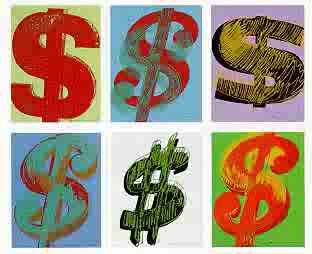 image: Robert Polidori
image: Robert PolidoriBack in August I linked to an interview with Robert Polidori on Art:Info about what at the time was an upcoming publication, After the Flood as well as a brief exhibition of a selection of prints at the Met. I commented before that I think After the Flood is one the greatest publications I've ever gotten my hands on and certainly a highlight for last year. I think I look at it daily since purchasing it - it is that dense and that evocative. For me it faithfully illuminates the incomprehensive scale of loss.
Interestingly, today Alec Soth has a postrelated to a question he posed in Sept. "Where are the People" - about the lack of a human subject in much of the photography generated out of the Katrina disaster (among other events worldwide). He lists Chris Jordan, Katherine Wolkoff, and Robert Polidori as examples of artists focused on the scene - the destruction, not so much the direct human story of the aftermath.
Soth:
think these are all terrific photographers. And they’ve done admirable work. But after awhile I find the absence of people in the pictures a little frustrating.
Katrina is a good example of why I often defend the efforts of photojournalists. Certainly photojournalism has numerous faults, but I admire the attempt to connect the subject (in this case Katrina) to real people.
“It makes it interesting to connect it with the life,” said Shulman. Of course! Architecture isn’t some frozen box, it is a home, a place where life is lived. While it is worthwhile to see the architectual devastation of New Orleans, I also want to see the people - the lives actually living in this mess.I'm sure its an insight shared by many and ultimately brings up issues of exploitation and the voyeur that make many uncomfortable, as practicioners of art and as audience members to works centered around tragedy or violence. Soth goes on to link to a response from Robert Polidori, from the Sept. post - which I have to say is worth the read, it is a damn good rant! As someone who is a big fan of both artists I've gotten a kick out of the exchange for the obvious cheap reasons but more importantly for certain issues they mention.
Polidori counters in his comment from the above linked the thread:
First issue, as someone who follows both artists works, I almost am beginning to see the Sleeping by the Mississippi series (Alec Soth) as a prelude to Polidori's After the Flood (not mention a contemporary parallel of sorts to Dylan's Chronicles).The two bodies of work are about the great Mississippi river which is a major foundation of our national pysche and has historically defined not only the regions it flows through - Minnesota to the Delta to the Gulf -but our national debate as a whole. It has always been at the center of trade, race, development and ecology for generations. The tragedy that played out with Katrina was a direct descendent of previous tragedies such as the 1927 flood, and points all the way back to the great engineering debates of the early and mid-19th century between the Army Corps. of Engineers and the then burgeoning private sector of engineering. The levee debate and subsequent policies of the 1840's-1860's created the Delta and ultimately put in motion a corrupt and scientifically unsound policy that through the generations of development and political hackery created a Frankenstein, leading to the nightmare unleased by Katrina. These two series for me are great documents of that history - the passage and drama of the people who have forged lives around the river and many times lost everything in return.
What more are you really going to learn from having a person there?
My belief is that you should take stills of what doesn’t seem to move,
and take movies or videos of does.
It’s my opinion that people come off better in movies.
It is my belief that you have a lot more indices of personal values
by looking at what individuals place in their living interiors than
by looking at their face.
That is why I photograph interiors...
Like I’ve been saying for 33 years rooms are both metaphors and
catalysts for states of being.
The pictures I took in New Orleans are looking at discarded exoskeletons.
The great majority of these residents who left those homes are now somewhere else living an interupted life.
 image: Alec Soth
image: Alec SothNow as to whether people are better portrayed by video/film verus still photography, I have to say that depends on the artist. I can only reflect not only on Soth's work but so many others Eggelston, Frank, etc. who are highly successful at evoking the nature of an individual and their place. I don't think one can be limited to one approach as the medium - but given the power of documentary film, Polidori may have a point.. I for one don't find his images lacking in human dimension - at least in terms of his Katrina pictures, but I also see the need for portraiture as well to help tell the "story". That probably has as much to do with my familiarity with the region as any artistic connection but Polidori works seem very alive pictures to me and quite complicated - I like the lack of personage in this instance.
Soth brings up another point which is great to hear, that we must have images from events like Katrina in our galleries, museums, and libraries. With so much art talk and art quoting art, it is good to be reminded that these events and the documentation/artistic investigation of the events, are part of the broader experience and visceral reminders of how we need to hold leadership and ourselves accountable for who we are and how we shape our individual and collective experience.
There is a world out there that has nothing to do with the art market and our discilipinary conceits.
As to the commercial exchange of these sorts of works that is another topic that needs to be discussed... be my guest to take that on.

























